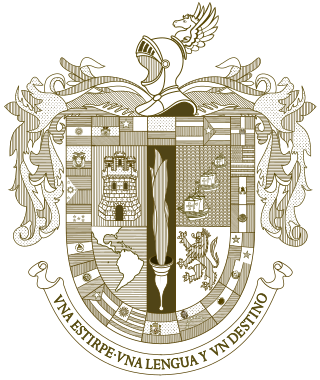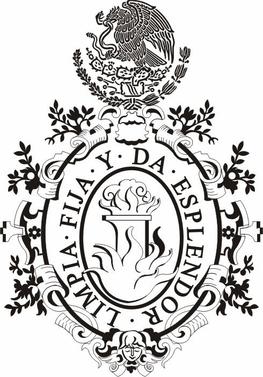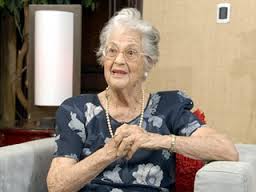
Spanish or Castilian (castellano) is a Romance language of the Indo-European language family that evolved from the Vulgar Latin spoken on the Iberian Peninsula of Europe. Today, it is a global language with about 500 million native speakers, mainly in the Americas and Spain, and about 600 million when including speakers as a second language. Spanish is the official language of 20 countries, as well as one of the six official languages of the United Nations. Spanish is the world's second-most spoken native language after Mandarin Chinese; the world's fourth-most spoken language overall after English, Mandarin Chinese, and Hindustani (Hindi-Urdu); and the world's most widely spoken Romance language. The country with the largest population of native speakers is Mexico.

The Royal Spanish Academy is Spain's official royal institution with a mission to ensure the stability of the Spanish language. It is based in Madrid, Spain, and is affiliated with national language academies in 22 other Hispanophone nations through the Association of Academies of the Spanish Language. The RAE's emblem is a fiery crucible, and its motto is Limpia, fija y da esplendor.

Ñ, or ñ, is a letter of the modern Latin alphabet, formed by placing a tilde on top of an upper- or lower-case ⟨n⟩. It became part of the Spanish alphabet in the eighteenth century when it was first formally defined, but it has subsequently been used in other languages, such as Galician, Asturian, the Aragonese Grafía de Uesca, Basque, Chavacano, some Philippine languages, Chamorro, Guarani, Quechua, Mapudungun, Mandinka, Papiamento, and Tetum alphabets, as well as in Latin transliteration of Tocharian and many Indian languages, where it represents or. It represents in Crimean Tatar, Kazakh, ALA-LC romanization for Turkic languages, the Common Turkic Alphabet, Nauruan and romanized Quenya. In Breton and in Rohingya, it denotes nasalization of the preceding vowel.
Ll/ll is a digraph that occurs in several languages.

The Association of Academies of the Spanish Language is an entity whose end is to work for the unity, integrity, and growth of the Spanish language. It was created in Mexico in 1951 and represents the union of all the separate academies in the Spanish-speaking world. The association publishes reference works on the Spanish language and commemorative editions of Hispanic literature, among other publications.

Spanish orthography is the orthography used in the Spanish language. The alphabet uses the Latin script. The spelling is fairly phonemic, especially in comparison to more opaque orthographies like English, having a relatively consistent mapping of graphemes to phonemes; in other words, the pronunciation of a given Spanish-language word can largely be predicted from its spelling and to a slightly lesser extent vice versa. Spanish punctuation uniquely includes the use of inverted question and exclamation marks: ⟨¿⟩⟨¡⟩.

Dominican Spanish is Spanish as spoken in the Dominican Republic; and also among the Dominican diaspora, most of whom live in the United States, chiefly in New York City, New Jersey, Connecticut, Rhode Island, Massachusetts, Pennsylvania, and Florida.
The Philippine Academy of the Spanish Language is the language regulator for Philippine Spanish, the variant of the Spanish language spoken in the Philippines. It is one of two Spanish language regulators located in countries where the language does not have an official status nationwide, the other being the North American Academy of the Spanish Language in the United States.

The Diccionario de la lengua española is the authoritative dictionary of the Spanish language. It is produced, edited and published by the Royal Spanish Academy, with the participation of the Association of Academies of the Spanish Language. It was first published in 1780, as the Diccionario de la lengua castellana and subsequent editions have been published about once a decade. The twenty-third edition was published in 2014; it is available on-line, incorporating modifications to be included in the twenty-fourth print edition.
The Academia Chilena de la Lengua is an association of academics and experts on the use of the Spanish language in Chile. It is a member of the Association of Academies of the Spanish Language and is a part of the Instituto de Chile.
The North American Academy of the Spanish Language is an institution made up of philologists of the Spanish language who live and work in the United States, including writers, poets, professors, educators and experts in the language itself. Its mission is to support and promote the study and correct usage of Spanish in the United States of America. The Academia, established in New York City in 1973, is a corresponding member of the Real Academia Española and a member of the Asociación de Academias de la Lengua Española, in Madrid, Spain.

The Academia Mexicana de la Lengua is the correspondent academy in Mexico of the Royal Spanish Academy. It was founded in Mexico City on 11 September 1875 and, like the other academies, has the principal function of working to ensure the purity of the Spanish language. Academy members have included many of the leading figures in Mexican letters, including philologists, grammarians, philosophers, novelists, poets, historians and humanists.

The Academia Colombiana de la Lengua is an association of academics and experts on the use of the Spanish language in Colombia. It is based in Bogotá, Colombia's capital, and is a member of the Association of Spanish Language Academies.
The Academia Guatemalteca de la Lengua is an association of academics and experts on the use of the Spanish language in Guatemala. It was founded on June 30, 1887. It is a member of the Association of Spanish Language Academies.
The Academia Hondureña de la Lengua is an association of academics and experts on the use of the Spanish language in Honduras. It was founded in Tegucigalpa on December 28, 1948. It is a member of the Association of Spanish Language Academies.
Fidel Villarroel was a Spanish historian, writer, filipinologist, biographer, political commentator, Master Theologian of the Dominican Order, and member of the Order of Isabella the Catholic. A recipient of the Pro Ecclesia et Pontifice, he is the former Archivist, Spanish Department Director, Prefect of Libraries, and professor at the Pontifical and Royal University of Santo Tomas. He had also served as secretary to the Apostolic Nunciature for 32 years(1959–1991), and is currently an academic director of the prestigious Academia Filipina de la Lengua Española, the local branch of the renowned Real Academia Española based in Madrid, Spain, and part of the Asociación de Academias de la Lengua Española.
A Latin-script alphabet is an alphabet that uses letters of the Latin script. The 21-letter archaic Latin alphabet and the 23-letter classical Latin alphabet belong to the oldest of this group. The 26-letter modern Latin alphabet is the newest of this group.

María de la Purificación Ugarte España was a Spanish-Dominican journalist, writer, academician, historian and palaeographer. Ugarte was the first woman who worked as a journalist in the Dominican Republic, and also the first woman to become a member of the Dominican Academy of History.

Joaquín Badajoz is a Cuban-American writer, editor and journalist.

The Equatoguinean Academy of the Spanish Language is an association of academics and experts on the use of the Spanish language in Equatorial Guinea, a republic in Central Africa in which Spanish is the national official language. Equatoguinean Spanish is the particular variety of Spanish spoken in the country. Since 19 March 2016, Equatorial Guinea has been a member of the Association of Spanish Language Academies.












